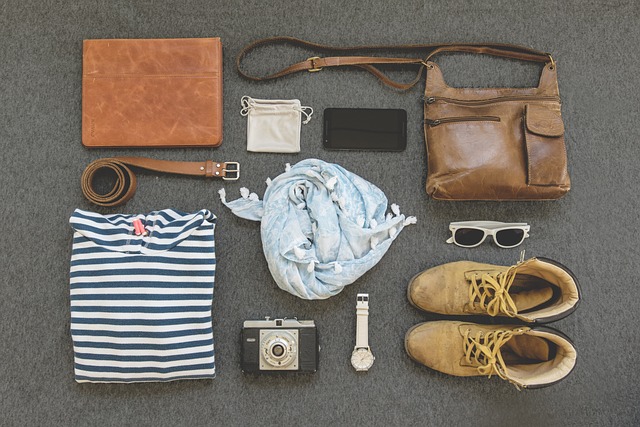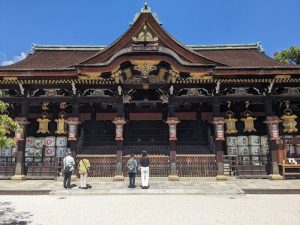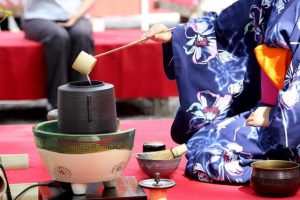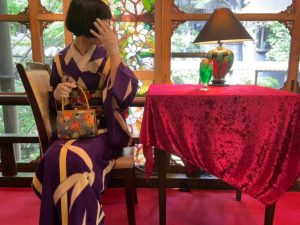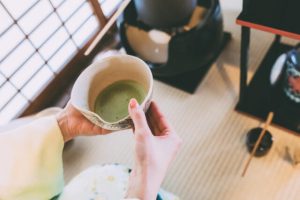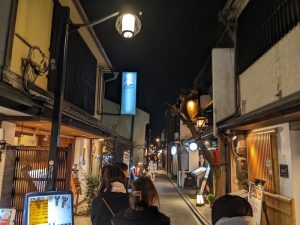When you hear “tea gathering,” you might imagine something formal and feel it’s intimidating. However, there are actually many different types of tea gatherings, and there are plenty of events that beginners can easily enjoy. In this article, we’ll provide a clear explanation of the different types of tea gatherings, the usual flow, essential items, attire, etiquette, and everything you need to know to participate in one. From formal tea ceremonies to casual large gatherings, let’s take a peek into the world of tea gatherings. By the end of this article, you’ll surely want to join one too!
Types of Tea Gatherings and How to Enjoy Them
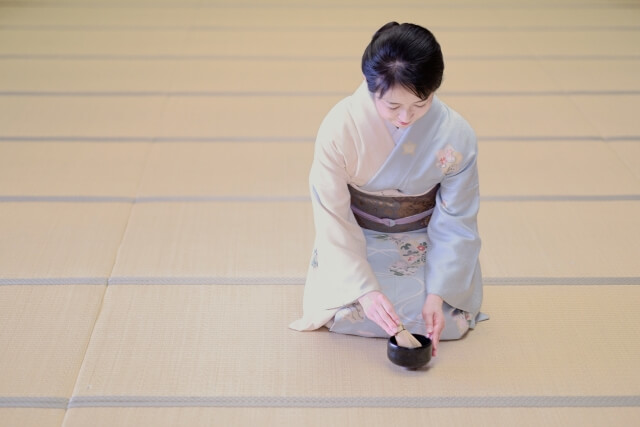
For those unfamiliar, the term “tea gathering” may not clearly convey what actually happens during one. However, there are many types of tea gatherings, some of which are easy for beginners to join. Here, we’ll introduce two main categories.
The Formal “Chaji” Tea Gathering
“Chaji” is a formal tea gathering that begins with a kaiseki meal, followed by serving thick tea and thin tea. It typically takes about four hours and involves a small group of around five people. Close acquaintances are usually invited. There are beginner classes for chaji and temple-hosted chaji events, but it’s rare to be invited to a chaji right away.
Casual “Large-Scale Tea Gathering”
A large-scale tea gathering, as the name suggests, invites many participants. There are various types, including those that only feature thin tea, making it easy for beginners to join. In Tokyo, there are large-scale seasonal events like the “Tokyo Grand Tea Gathering” or the “Gin Tea Gathering.” Even for casual tea gatherings, you may wonder about attire and what to bring. Let’s first look at the essentials for attending a tea gathering.
Useful Items to Bring to a Tea Gathering
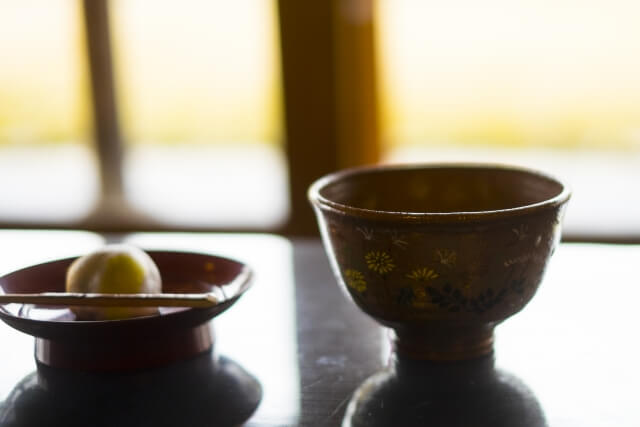
What should you bring to a tea gathering? Here are some convenient items:
Kaishi (Pocket Paper)
Kaishi is used when receiving sweets. Like a fan, sizes differ for men and women. Bring a fresh booklet of kaishi to the tea gathering. For formal chaji, plain white kaishi is recommended.
Yōji (Small Cutlery for Sweets)
Yōji is used to enjoy the main sweets. They come in various materials like bamboo, kuromoji wood, or stainless steel. Carry them in a yōji case and wrap them in kaishi.
Fan
A fan is a must for tea gatherings. Use a tea ceremony-specific fan. Men’s fans are larger than women’s. It’s placed in front of you when greeting others.
Fukusa (Silk Cloth)
Fukusa is used to purify utensils during the tea ceremony. If you are the host, tuck the fukusa into your obi (sash). Guests do not necessarily need to bring one.
Fukusa Basami (Small Pouch)
A small pouch to hold the fukusa and kaishi, sometimes called a kaishi case.
Sukiya Bag
At a tea gathering, bring essential items like the fukusa, kaishi, and yōji in a sukiya bag. These items can also be carried directly inside your clothing, with the fan tucked into your obi. You can wrap the sukiya bag in a furoshiki (wrapping cloth) with your coat for storage.
Appropriate Attire and Grooming for a Tea Gathering
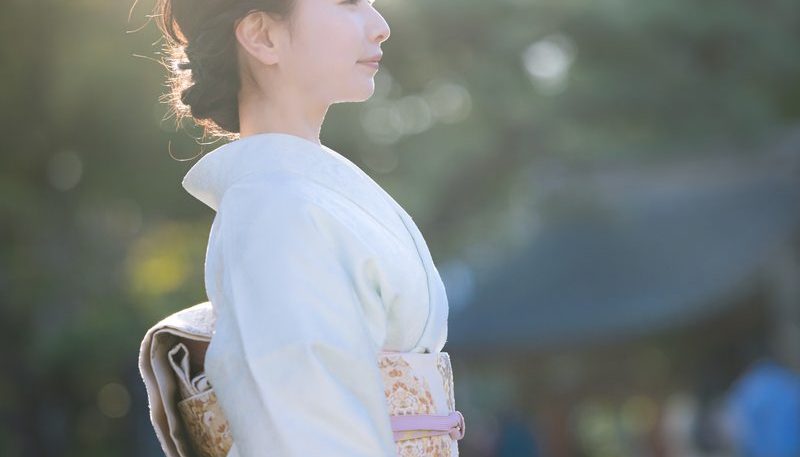
On the day of the tea gathering, dress appropriately and groom yourself for a fresh and clean appearance.
Grooming:
Avoid wearing perfume.
Remove jewelry like rings or watches that might damage tea utensils.
Tie back long hair, avoiding large hair accessories.
Set your phone to silent mode or turn it off.
Attending in Kimono
Choose a kimono that is not overly casual. White collars and tabi (split-toe socks) are standard. It’s helpful to have spare tabi or tabi covers to keep your feet clean when entering the tea room.
For Men
Coordinate with a subdued tone that suits the tea room atmosphere, such as pairing a solid-colored tsumugi with a hakama. Hakama is recommended as it keeps the lower garments clean. If wearing a hakama, you may wear stetocho (traditional undergarments), but if not, wear a long undergarment with a narrow obi to prevent the outfit from becoming disheveled.
For Women
A dyed kimono with a fukuro obi (formal sash) or a respectable Nagoya obi is recommended. Tsumugi is casual, so it is not suitable for tea gatherings unless it’s a plain-dyed tsumugi that can be paired with a formal obi. If invited, it’s best to confirm what type of tea gathering it is beforehand. Enjoy coordinating with the theme or atmosphere of the tea gathering. Choose patterns that reflect the season, classical elegance, or calm natural tones.
Attending in Western Attire
Change into clean socks at the waiting room before the tea room. Bring new socks, especially if it’s a rainy day.
For Men
A shirt with a jacket or a suit is appropriate. Office casual is acceptable, but opt for subdued colors. Avoid jeans as they make sitting cross-legged uncomfortable.
For Women
Suits or office casual are recommended. If wearing a skirt, knee-length or midi-length is suitable. Since tea gatherings involve a lot of standing and sitting, choose clothes that are easy to move in. Knee-length skirts are preferable to ankle-length. Accessories should be removed, but choosing fabrics with sheen or lace details can add a touch of elegance. If wearing pants, avoid jeans.
The Flow of a Tea Gathering
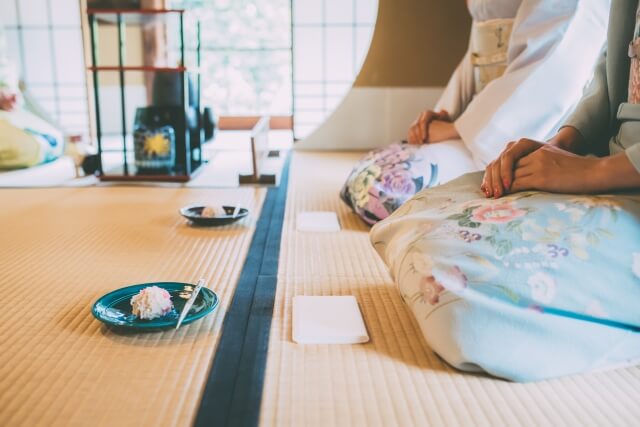
How does a tea gathering proceed? Here is a typical flow:
Greetings
The host will greet the guests. Usually, the main guest is greeted first, followed by the others. Return greetings as appropriate.
Etiquette During the Tea Ceremony
Follow the host’s gestures for greetings at the beginning and end of the tea ceremony.
Receiving Sweets
When sweets are served, follow these steps:
Address the person to your left with “Excuse me for going ahead.”
Lift the sweet dish with both hands, place it in front of you, and give a small bow.
Spread your kaishi in front of your knees.
Take a sweet from the dish with your kaishi and enjoy it.
Pass the sweet dish to the next person.
Receiving Tea
Receive the tea following these steps:
Accept the tea bowl from the server.
Turn the bowl slightly clockwise to avoid drinking from the front.
After drinking, wipe the rim, turn it counterclockwise, and return it to the server.
Ending the Tea Gathering
The tea gathering ends with a final greeting from the host. After the greeting, you can view the decorations or utensils at the tokonoma (alcove) or tearoom before leaving.
Conclusion

This article has covered the types of tea gatherings, the flow, essential items, attire, and more. There are formal “chaji” and more casual “large-scale tea gatherings.” Beginners might want to start with a large-scale gathering. Essential items include kaishi, yōji, a fan, fukusa, a fukusa basami, and a sukiya bag, with kaishi, yōji, and a fan being must-haves. Appropriate attire should be neat and not overly casual. Men should consider suits or jackets, while women might opt for dresses or suits without accessories. Remember the key etiquette for greetings, gestures, and how to enjoy sweets and matcha. A tea gathering is a unique opportunity to experience traditional Japanese culture. Use this article as a guide, and consider participating yourself.
